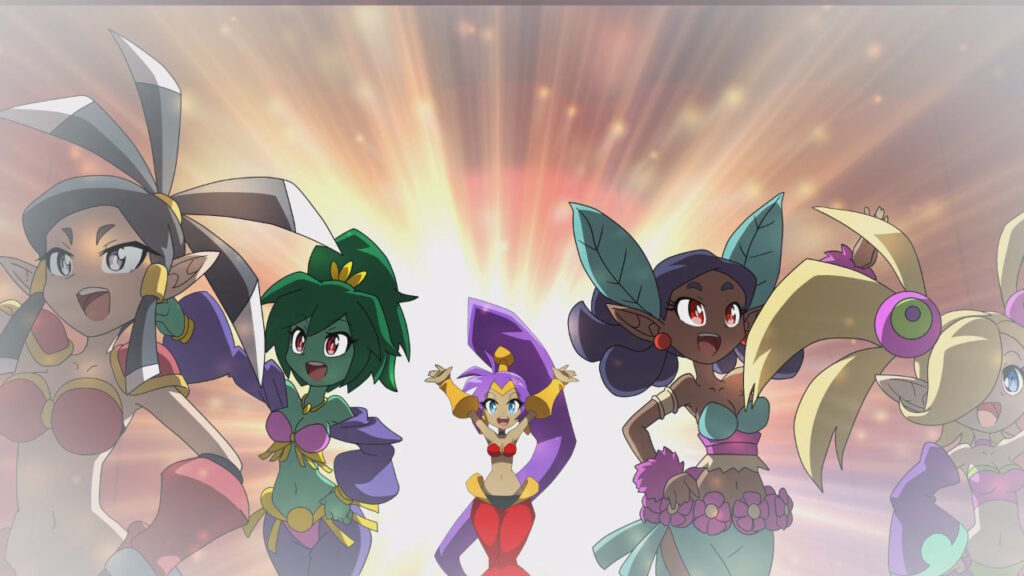
The original Shantae from 2002 on the Gameboy Color was released late, and was quickly doomed to obscurity. The Gameboy Advance had already been out for a year and Capcom did not do much to market Matt Bozon’s opus. Risky’s Revenge came eight years later, proved to be extremely short, and was plagued with sloppy level design and backtracking.
Pirate’s Curse refined things by improving the flow of gameplay and level design. Half-Genie Hero took things a step backwards by dropping the Metroidvania structure and required players to replay linear levels multiple times. The action took a hit due to the constant stopping and starting of dancing transformations.
One thing is undeniable about the franchise; it has been consistently charming with its style. With Shantae and the Seven Sirens, WayFoward embraces its Metroidvania roots. Today, there is an ocean of Metroidvanias. Can Seven Sirens‘ personality be enough to carry it through this deluge of nonlinear action platformers?
Shantae and the Seven Sirens
Developer: WayForward
Publisher: WayForward
Platforms: Windows PC, Nintendo Switch (reviewed), PlayStation 4, Xbox One, iOS
Release Date: May 28, 2020
Players: 1
Price: $29.99
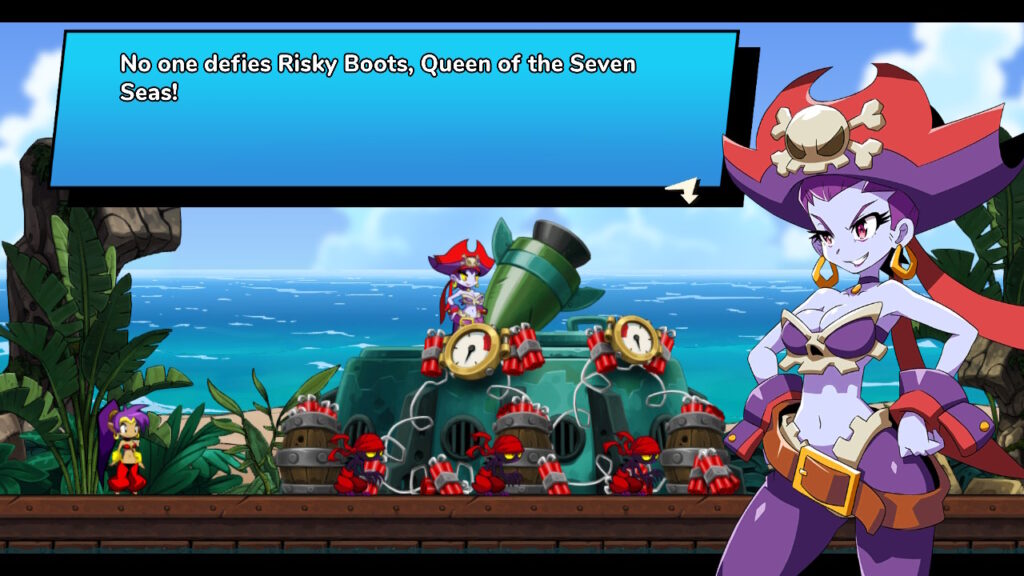
Waifu-appeal is very real, and sex does indeed sell. Having incredible production values and deftly crafted art can also carry subpar games to becoming popular. We are simple creatures, and sometimes it is easy to get swayed by imagery that taps into our base interests.
Shantae is a series that has managed to get by thanks to its appealing art and character designs. Take away the polished 2D visuals and slick animation, you would be left with mediocre to average action platformers. It is a miracle that Shantae exists as a franchise for as long as it has been around.
While none of them are outright terrible or unplayable, the Shantae games rarely do anything interesting. Beneath the cute and bubbly surface, these are very bland and generic platformers that fail to impress anyone who grew up playing platfromers in the Clinton years. Shantae and the Seven Sirens, regrettably falls into the same trap but does try its hardest.
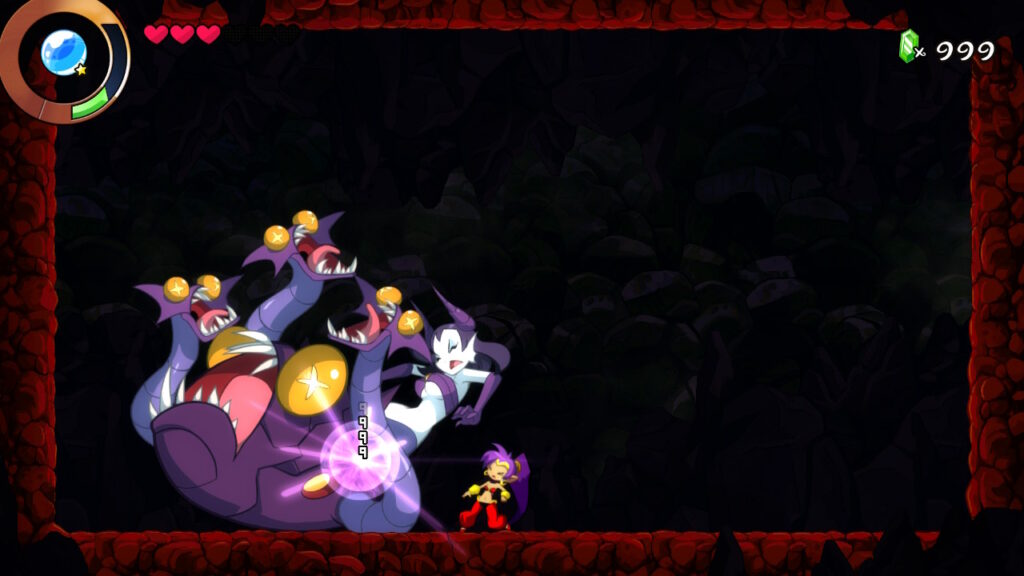
Just by the way Seven Sirens begins, it is clear that the boys at WayForward were sparing no expense. Studio Trigger animated an impressive intro sequence, complete with an original song which is admittedly catchy. Through out the game, short animated sequences are used effectively to establish boss introductions and are fully voiced.
Shantae and the gang go to Paradise Island for a vacation where other Half-Genies are about to put on a belly dance performance. There is more to the island than meets the eye, and in a typical jokey and self-aware way, an adventure begins.
Our bodacious heroine is tasked with rescuing her fellow Half-Genies; fusing with them to gain new abilities and dance styles, to progress deeper into the bowels of the mechanical underbelly of Paradise Island.
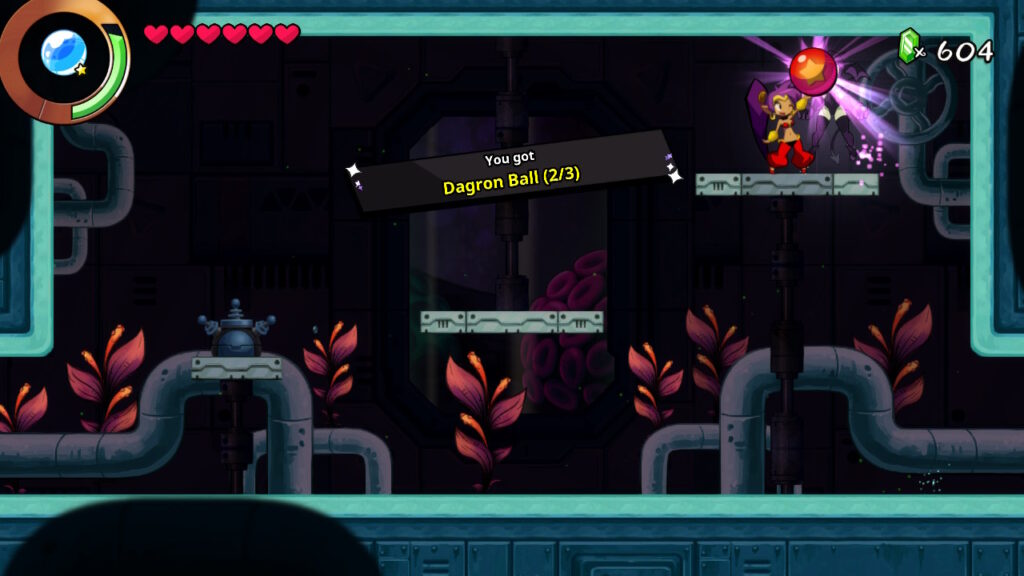
Shantae and the Seven Sirens unfolds in a strict structure of having to do some key-item hunting for NPCs in the main hub overworld, which leads to a door to a dungeon level. These self contained areas are the best parts of Seven Sirens, concentrated into a delicious fine mist that washes over you like an awesome wave.
Shantae will often rescue another girl, gain an ability to further expand her range of traversal. Beating the dungeon will lead to the cycle starting over again and if one is so inclined, take some optional excursions to gain some health expansions.
The dungeons’ level design is where WayForward can stretch their creative legs. Each one has a theme and some kind of gimmick that makes them memorable. They operate not unlike something out of a Zelda game, where each requires mastery of a specific ability. It is a timeless and satisfying means of exploration that holds up.
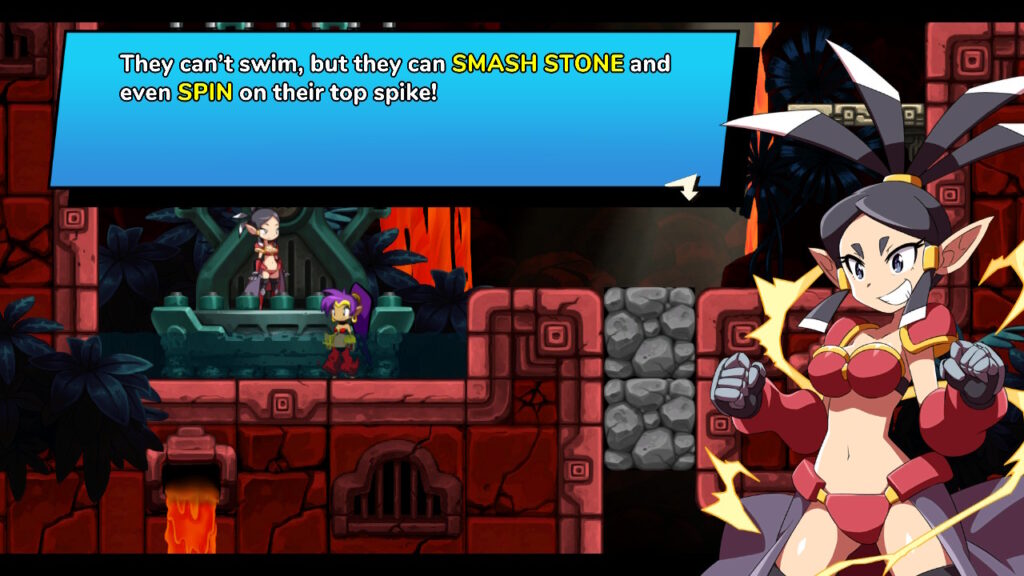
As Shantae’s repertoire expands, so does the main hub world. Having to re-explore so much of it whenever she gets a new ability becomes tedious. This is ultimately necessary, since Shantae is required to help out some characters between dungeons. This typically involves searching for some trinket and bringing it back to them.
This is filler at its most superficial and obvious. WayForward is likely aware of the criticisms levied towards them over the brevity of their previous games. It feels so artificial and forced, that if Seven Sirens was shorter without these sequences, it would benefit from being a tighter and leaner experience.
Shantae and the Seven Sirens is a action platformer, and it is at its best when Shantae is confronted with precarious obstacles. WayForward writers think they are a lot funnier than they actually are, and during the story scenes dialogue tends to go on way longer than it should.
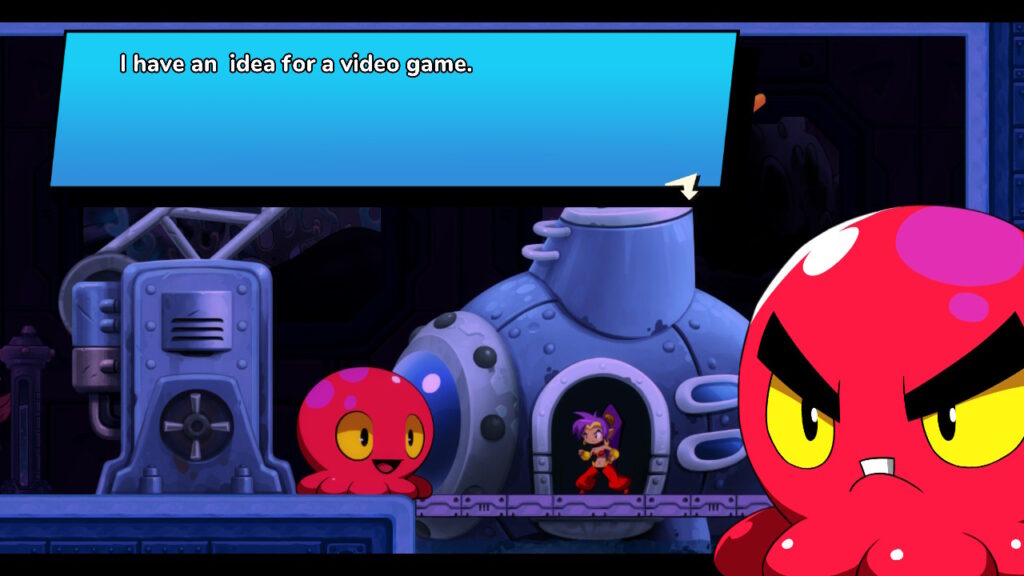
It would be tempting to skip these parts, but they include crucial details of what kind of scavenger hunt that Shantae will have to endure before she can get to the next dungeon. It is during these moments where it becomes unclear who the target audience for Shantae and the Seven Sirens is supposed to be.
The gimmicky dungeons and low difficulty would suggest that this is supposed to appeal towards children. The challenge rarely rises past what is expected from a Kirby game, since the platforming is simple. The gags are frequently self-referential and there are some jokes that would go over the heads of most kids.
Shantae has access to many upgrades that come at a low cost that will make her into a demigod. Between the regenerating MP accessory, the invincibility spell, a dance that restores HP, the endless food supply dropped by enemies, and cheap potions to buy; there is almost no way to lose.
This is not counting the trading cards that are dropped by monsters that modify Shantae’s passive abilities. It becomes very easy to break the game with an absurdly powerful combination of cards that will completely trivialize boss battles. This kind of power can be earned very early; less than half way through the game.
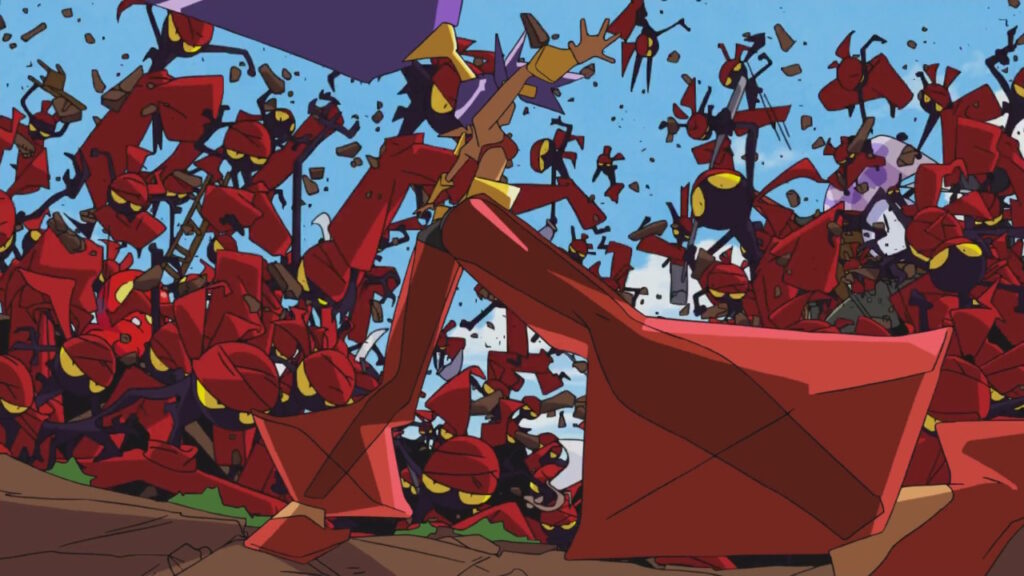
Only during new game plus is when Seven Sirens dares to mix things up by nerfing Shantae’s physical prowess. She may be weaker and take more damage, but the upside is her magical powers increase.
This changes things enough where suddenly the fireball spells can be viable regular attacks, making the game play like Mega Man. The healing dance is still effective, thus making the increased challenge almost pointless.
The risque art and fetishy bikinis is not exactly the kind of aesthetic that would appeal towards kids. The difficulty reflects a laid back beginner level Metroidvania, but the imagery suggests something for teens. Shantae and the Seven Sirens really needs a bit more bite to its challenge.
Monster World IV is Seven Sirens’ closest relative, and it is a much more hardcore experience. It needed to emulate its old school rising challenge sensibilities, but instead it gets easier the longer the game goes on, as Shantae only gains more abilities and power-ups.

As polished as Seven Sirens is, it is also boring. This is as typical of a Metroidvania as can be, and Shantae’s abilities have barely changed from Half-Genie Hero. All the previous spells are exactly the same. There is very little that has been innovated upon, and it all blurs together in a haze of garden-variety platforming.
The controls prove to be highly responsive and fluent. Shantae has never felt so tight in your hands now that she can do her transformations instantly, without having to break out into a belly dance. The flow of traversing is fluid and satisfying, since you never have to stop except for unusually long load times between zones.
The best aspects of the graphics of Half-Genie Hero have been recycled in Seven Sirens. May as well, since characters looked good and had a wide range of expression and poses. Shantae herself is distinct thanks to her unique silhouette and color pallet. The backgrounds are all lively 2D backdrops with some animated accents.
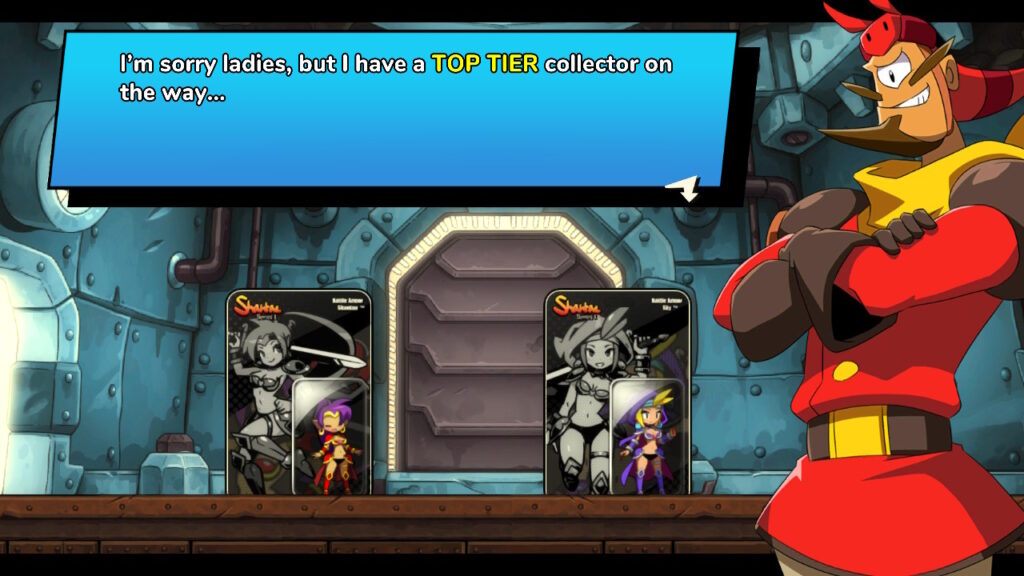
Sadly, Jake Kaufman does not return with his signature sound and his absence is felt. The new composers do try their best to imitate some of Kaufman’s style in some parts with some chip tune motifs, but these new musicians fall short of crafting anything truly memorable.
The music is just bland and interchangeable with pretty much any indie game imaginable. The only pieces that stood out were the more quiet and atmospheric tones, that are totally original and unique from anything Kaufman has ever done.
For some reason Seven Sirens takes only a half measure with voice acting. Only some lines in conversations will be voiced, and other times characters will have complete conversations. The overall voice acting quality is about what you’d expect from an anime dubbed by Funimation; hammy and overly bubbly high pitched performances all around.
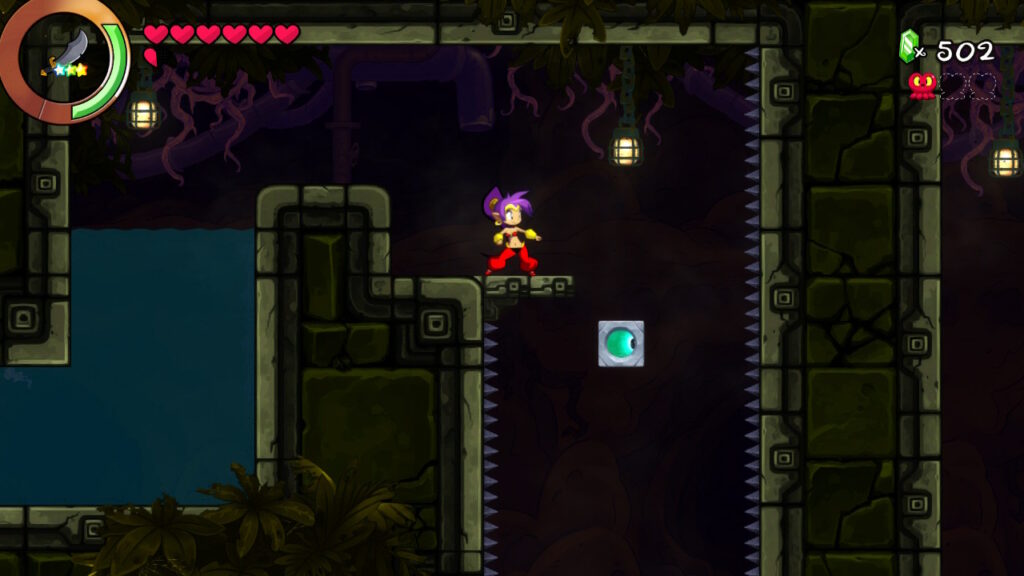
Shantae’s voice actress specifically is well cast, and truly embodies the character. Even the energetic and frantic intro song is sung by the same performer to make it hers. It is a small touch that adds a bit more personality to the presentation in an otherwise run-of-the-mill Metroidvania.
Shantae and the Seven Sirens is not going to impress hardcore Metroidvania enthusiasts. It is very basic, and is unbalanced in the player’s favor. Level design is unremarkable and bland; as if it was crafted with a rudimentary level editor.
Children might enjoy this thanks to the easy-to-pick-up-and-play responsive controls. The humor might not connect with them and the imagery might imprint some fetishes in their heads early on, but this is a decent entry level Metroidvania. Adults who might be curious stand a good chance at being extremely bored.
Shantae and the Seven Sirens was reviewed on Nintendo Switch using a personal copy. You can find additional information about Niche Gamer’s review/ethics policy here.